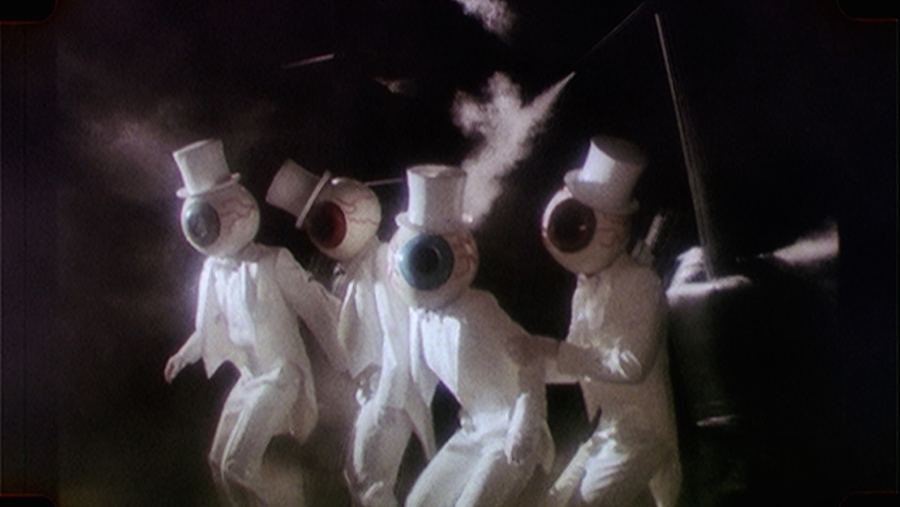

The performance footage viewed throughout brings out the role of movement in all works by The Residents, which can get lost in the costumes, sounds, and sets. It is interesting to consider that for some reason, much of the contributions by members of The Cryptic Corporation are accompanied by vintage industrial or educational film stock. They provide the most context of where The Residents came from especially geographically in terms of their leaving Shreveport, LA, for the more sympathetic San Francisco, CA. This is a group of individuals who both supported The Residents and seemed to serve as a kind of an exclusive fan club. The most enlightening interviews are with the eccentric members of The Cryptic Corporation. However, the Eagles and Rush documentaries are more a monument to their legacy, whereas this work is more similar to the Fishbone documentary ( Everyday Sunshine: The Story of Fishbone) in that it is showing an uncompromising band that defies convention and is yet – despite the odds – still active. Consequently, much like the popular documentaries on Eagles or Rush, this can feel at times like a promotional vehicle. But it does remove a layer of objectivity from the documentary, as the sole performance might influence how the film is construed or the argument is presented. Given the retrospective nature of the concert, this proves a sound strategy. This is where the story starts, following a brief introduction, and Hardy comes back to this performance throughout as a point of reference. The film is loosely framed by a performance in Vienna from 2014.

More experimental rock musicians like Chris Cutler of Henry Cow and Les Claypool of Primus contribute considerably. Other commentators include Penn Jillette, who was also their "spokesman" and narrator for the Mole Show tour in 1982. And given that this band functions more like an art collective, it is notable, and perhaps fitting, that two curators provide some of the most compelling and informative commentary: Barbara London, Museum of Modern Art curator (where The Resident’s video collection and "Box Set in a Refrigerator" is held) and Steve Seid (video curator from Pacific Film Archive). Composed of interviews, press clippings and video snippets, and generous performance footage from various sources, the documentary does provide an authoritative overview. Not unlike listening in order through The Residents’ discography. It takes on one topic after another, without much bridging the segments. However, the structure of the film is not so clearly organized that it progresses through a predictable narrative. Viewers will enjoy a thorough primer on The Residents: How they work, the motivations for their aesthetic, who embraced that aesthetic, how they financially sustained themselves, who they influenced, and who influenced them. Numerous figures interviewed certainly present themselves as unofficial members who are documented performing in a supporting fashion with what is projected as The Residents: three-to-four trim people of average height in formal wear, hiding their identities with giant eyeball masks adorned with top hats, as well as other curious costumes. Based on some of the anecdotes, it truly becomes unclear if there are formal members, to the point that some of the interviewees might be members. Lacking any background personal stories for viewer to relate to renders their history more impersonal, which may be part of the point. Throughout the film, various interviewees consider the notion that The Residents might not actually exist – the group might just serve as a music and video collective committed to an evolving bewildering concept. The best this report can do is note the various statements and point out the gaps.” This one quote could serve as a mission statement for Don Hardy’s documentary, Theory of Obscurity – a Film about The Residents.
#The residents theory of obscurity tv#
In 1979, Matt Groening – ten years before changing network TV forever with The Simpsons – issued the following impression of The Residents: “There is no true story of The Residents… any understanding of them must take into account their organized sound and their organized silence.


 0 kommentar(er)
0 kommentar(er)
